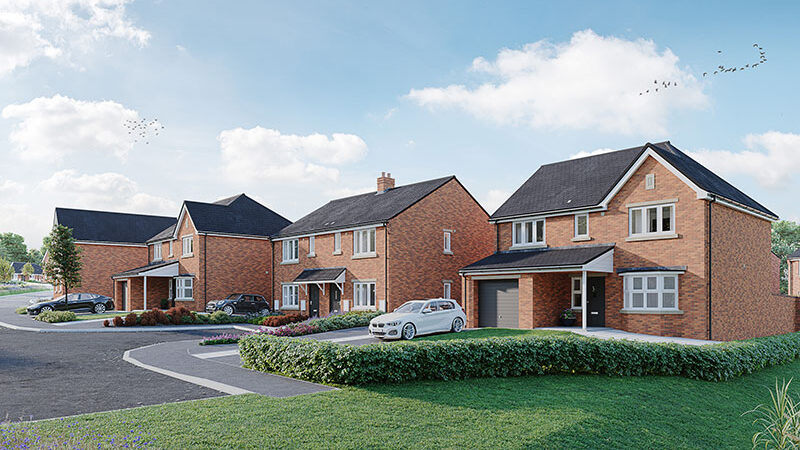Leasehold vs Freehold: Differences

When it comes to buying a home, one of the core decisions you’ll face is whether to choose a leasehold or freehold property. These two types of ownership will have different implications, so it’s important to know how each works. In this blog, we’ll delve into the characteristics, advantages, and potential drawbacks of both leasehold and freehold properties.
Leasehold Meaning
If you choose a leasehold property, this means you have the rights to stay in the property for a fixed period of time but you don’t own the land that the property is standing on. You’ll therefore have a ‘lease’, which is a legal agreement with the land owner stating your rights to live on the land.
Benefits of Leasehold
Some advantages of choosing a leasehold property include:
- Usually lower cost to buy: In general, leasehold properties tend to be cheaper, especially for first time buyers who can access home ownership schemes.
- There is less responsibility over building maintenance: Any maintenance issues and repairs often lie with the landlord to solve. These problems will be paid for by the sinking fund that other leaseholders pay into, so you can avoid these extra costs.
- No buildings insurance to pay out: part of your service charge will cover this.
- Leasehold developments often have gardening taken care of: Residents often have a shared garden area that is regularly upkeeped by tradesmen.
Disadvantages of Buying Leasehold Property
When buying a leasehold property, you’ll have to take into consideration maintenance fees and ground rent that’s usually sent to the owner of the land annually. Maintenance fees can cover unexpected work that’s needed in the building and is often paid into a sinking fund. The ground rent could be a fixed rate or escalating rate, so it’s important to find out this information early to avoid unexpected costs over the years. If this is an escalating rate, then the ground rent could even double every few years.
There have been disputes against these rates, as people struggled to remortgage or sell their properties with expensive ground rates. As a result, the government created the Leasehold Reform Act 2022 which means that (as of 30th June 2022) you shouldn’t be charged any ground rent when you start owning new leasehold properties. Under the act, rent is restricted to a ‘peppercorn’ leasehold, meaning it’s a tokenistic, tiny value that is prerequisite to a legal lease agreement.
Extending Leasehold
If a lease is under 80 years, this can make the property difficult to sell or remortgage. If the lease has only 60-80 years remaining, the cost to extend it can be extortionate so it’s important to extend your lease before this time. Extending a lease can be done either informally or formally.
An informal agreement can be negotiated with the freeholder, usually the landlord, who will lay out the lease term, ground rent and other costs. Using this method can be quicker and cheaper, but leaves yourself open to additional charges being introduced from the freeholder.
The statutory route is safer and ensures you no longer pay ground rent after extending the lease. Although this option is more expensive with paying for valuation, negotiation and legal fees for both you and the freeholder.
Overall, when buying a leasehold property there are lots of hidden costs that should be considered. You shouldn’t jump into buying this kind of property without knowing the full breakdown of costs as well as any expected increases over the years.
Freehold Meaning
A freehold property is owned outright, which includes the building itself and the land it’s built on. Put simply, freehold means ‘free from hold’.
When you’re a freeholder, you don’t have to:
- Pay additional charges to the landlord e.g. ground rent.
- Deal with a lease running out.
- Ask to make changes to the house through the landlord.
- Abide by the landlord’s rules.
In general, buying a freehold home means less hassle since you don’t have to manage a lease or be in contact with a landlord. On the other hand, if the property sustains any damages, you’ll have to pay for repairs yourself.
Share of Freehold
In some instances, shared freehold allows people to own the leasehold for their property but also have shares in the entire building and the land it is built on. This is most common for flat owners who want a say in how the building is run.
Is Leasehold or Freehold Better?
Choosing between leasehold and freehold properties involves careful consideration of your financial situation, long-term plans, and personal preferences. Leasehold properties offer affordability and convenience in terms of maintenance, while freehold properties provide complete ownership and control. Before making a decision, it is crucial to fully understand the terms and conditions associated with both types of ownership to determine which is best for you.
About Our New Build Homes
At County Town Homes, we offer a brilliant range of new properties across Staffordshire and Shropshire. Our properties are all freehold and have a 10 year structural new home warranty. Interested in buying a new build home? Get in touch with a member of our helpful team for more information.

